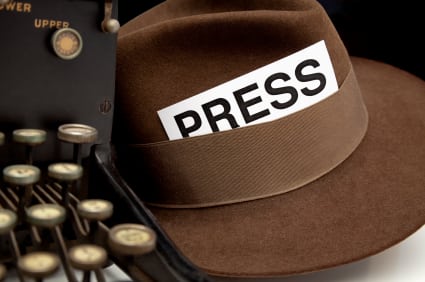 |
| Are your news releases relics of the manual typewriter era? |
More journalists than ever before are now using social media to source, research and write their stories. As PR News reported in June 2012, a survey of 600 journalists by Oriella found that more than half (55%) use social channels such as Twitter and Facebook to find stories from known sources, and 43% verify existing stories using those social platforms. That’s why it’s important to have a social media-ready press release, so journalists will take notice of your news.
Keeping in mind this sea change from traditional releases of yore—which are more than likely ignored, deleted or never seen by today’s journalists and other important stakeholders—here are 10 Do’s and Don’ts for crafting news releases:
- DON’T: Write long, verbose sentences telling the story. Get to the heart of the matter in both the headline and first graph. Think of the headline as a good Twitter pitch.
- DO: Include a main image that tells your story. A reporter just might take that image and post it on their news site or blog.
- DON’T: Use “inside baseball” jargon, unless your release is aimed at a highly targeted audience (in which case you probably should use another platform other than a news release to get the story out).
- DO: Use quotes in your release from key influencers pertaining to your story. These can be linked to search engines and posted via Twitter and Facebook.
- DON”T: Use clichés, generalizations or superlatives. Check out this PR News article on the “25 Most Overused Words and Phrases in Press Releases,” and be sure to read the Comments section at the bottom.
- DO: Add links to research, facts, statistics or trends that could be helpful to the journalist writing the story. Take it from a PR News editor/reporter: Fresh, compelling data gets our attention.
- DON’T: Use [email protected] as a contact. Use a real person, and add their social profiles.
- DO: Make the release available in an RSS news feed. Most savvy reporters depend on feeds for story ideas.
- DON’T: Leave out links to supporting materials like charts, slide decks, PDFs, infographics or whitepapers.
- DO: Include case histories and/or human interest stories, and link to their sources for more information.
Finally, a bonus "do": Stay current on social media trends and tools, because there's a good chance reporters will discover them and use them.
Follow Scott Van Camp: @svancamp01
